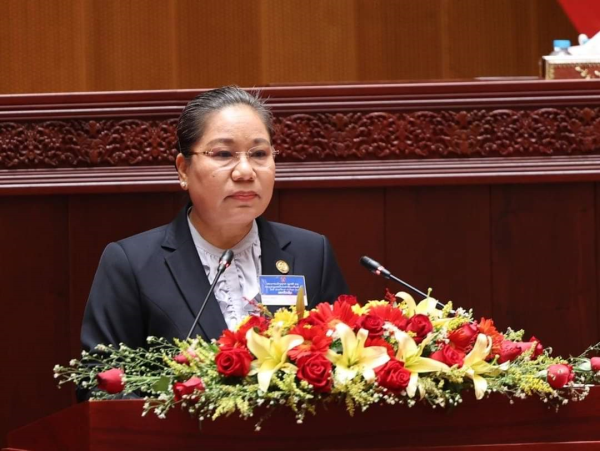ຂປລ
The Minister of Information, Culture, and Tourism, Mrs. Suansavanh Viyaket, has urged revisions to the Law on Signs to address gaps in its implementation and enforcement, aiming to ensure better regulation of signage across the country.

(KPL) – The Minister of Information, Culture, and Tourism, Mrs. Suansavanh Viyaket, has urged revisions to the Law on Signs to address gaps in its implementation and enforcement, aiming to ensure better regulation of signage across the country.
She presented the findings of a six-year evaluation of the law to the National Assembly’s 8th Ordinary Session on November 22.
The evaluation revealed widespread non-compliance with the Law on Signs, which was enacted in 2018 to regulate advertising and ensure signage adheres to cultural and aesthetic standards. According to Mrs. Suansavanh, the dissemination of the law has been inconsistent, leaving many business operators unaware of its requirements. This lack of awareness has led to unauthorized advertising and signage that violates legal standards, including content considered rude, obscene, or culturally inappropriate.
The Law on Signs (No. 50/NA), comprising 12 chapters and 64 articles, was introduced on June 21, 2018. Since its implementation, efforts have included a nationwide campaign to inform relevant parties, such as sign managers, business operators, and government agencies. Approximately 2,000 copies of the legal text have been distributed, and the law is accessible on the Ministry of Information, Culture, and Tourism’s website.
Despite these initiatives, challenges persist. Many entrepreneurs remain uninformed about the law, resulting in insufficient compliance. Public awareness is low, and enforcement has been weak, leading to the proliferation of non-compliant signage.
“The law’s provisions are not clear enough,” Mrs. Suansavanh said, pointing to ambiguities in regulations, such as the number of languages permitted on signs and the inclusion of foreign languages alongside Lao. She also highlighted uncertainty over fee structures and service rates, as well as enforcement mechanisms to curb excessive use of foreign-language signage.
Frequent staff turnover in regulatory agencies has compounded the problem, delaying inspections and enforcement. Although the importation of signs is prohibited, compliance checks remain inadequate, and violators face limited penalties due to weak enforcement measures. Additionally, there is insufficient funding, a lack of vehicles, and a shortage of standardized tools to monitor and manage signage effectively.
Mrs. Suansavanh emphasized that stronger measures and clearer guidelines are needed to enhance compliance and create more orderly and aesthetically pleasing urban environments. She called for revisions to the law to address its shortcomings and improve its implementation.
The findings highlight the importance of robust enforcement mechanisms and ongoing public education to ensure that the Law on Signs meets its intended objectives.
KPL